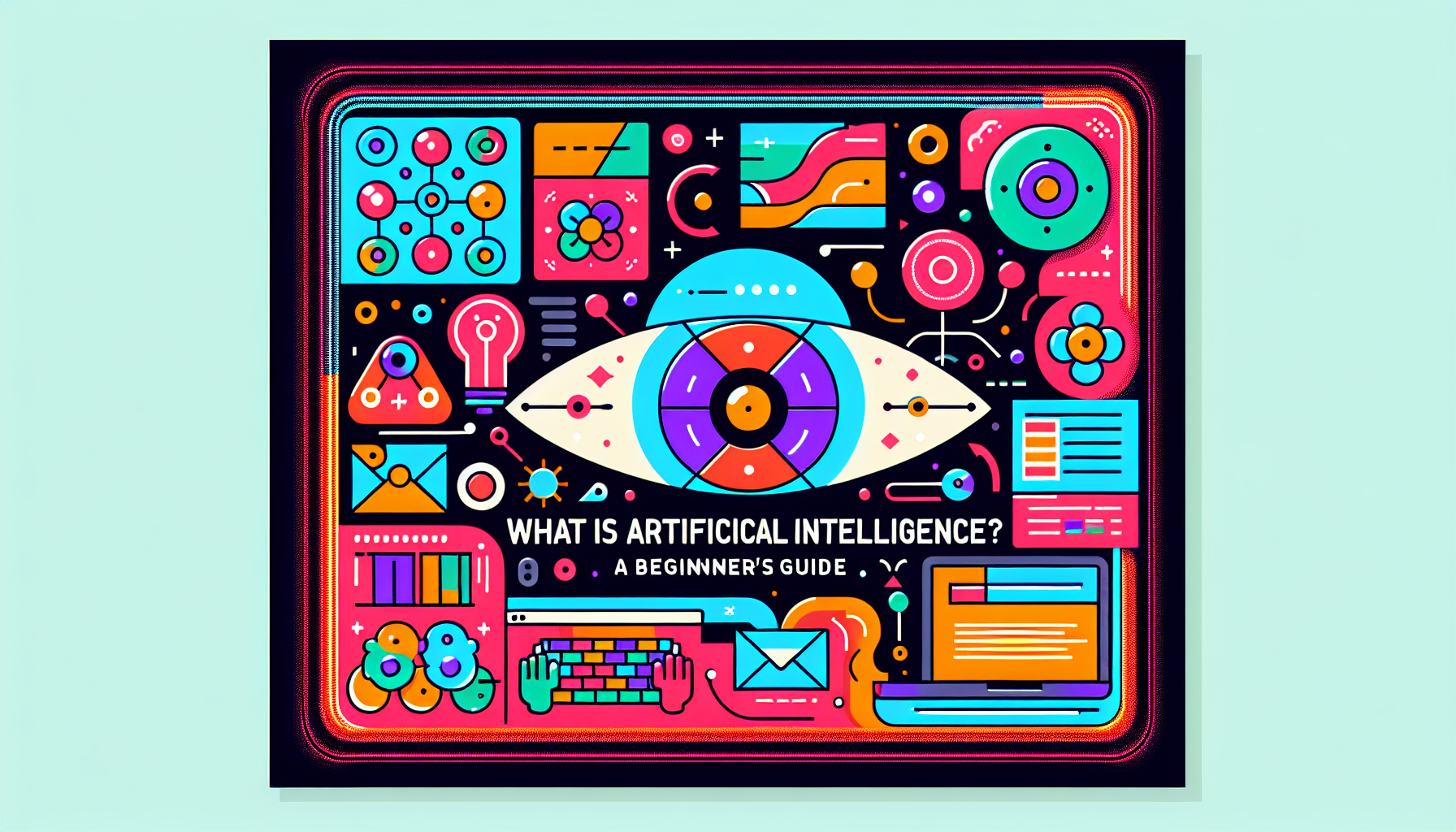Artificial Intelligence (AI) is a term that has rapidly gained popularity in recent years, yet many people still find it difficult to grasp what it truly means. In this beginner’s guide, we’ll explore the fundamental concepts of AI, its various applications, and its implications for the future. By the end of this article, you’ll have a clearer understanding of what AI is and how it affects our daily lives.
Understanding Artificial Intelligence
At its core, Artificial Intelligence refers to the simulation of human intelligence processes by machines, particularly computer systems. This includes learning (the acquisition of information and rules for using it), reasoning (using the rules to reach approximate or definite conclusions), and self-correction. The term AI can encompass anything from Google’s search algorithms to autonomous vehicles.
Types of AI
AI can be categorized into two main types: Narrow AI and General AI.
1. Narrow AI: This is the most common form of AI we encounter today. Narrow AI is designed to perform specific tasks, such as facial recognition, language translation, or playing chess. These systems operate under a limited set of constraints and cannot perform tasks outside their programmed capabilities. For instance, while a narrow AI can beat humans at chess, it cannot understand or play a different game like football.
2. General AI: Also known as Strong AI, this type refers to a theoretical machine that possesses the ability to understand, learn, and apply intelligence as a human would across a broad range of tasks. General AI remains largely a concept at this point, as we have yet to create a machine that can match human cognitive abilities in every aspect.
How Does AI Work?
AI systems are built using a collection of algorithms and models that process data. Here are some key components that contribute to the functionality of AI:
– Machine Learning (ML): This is a subset of AI that enables systems to learn from data and improve their performance over time without being explicitly programmed. ML algorithms identify patterns in data and use these patterns to make predictions or decisions. For example, Netflix uses machine learning to recommend movies based on your viewing history.
– Deep Learning: A further subset of machine learning, deep learning utilizes neural networks to mimic the human brain’s structure and function. This allows AI systems to handle vast amounts of data and recognize intricate patterns, making it particularly effective in applications like image and speech recognition.
– Natural Language Processing (NLP): This technology enables machines to understand and interpret human language. NLP is used in applications like chatbots, virtual assistants, and language translation services. For instance, when you ask Siri a question, NLP helps the AI understand your words and provide a relevant response.
Applications of AI
AI is transforming various industries and sectors through its diverse applications:
– Healthcare: AI is revolutionizing healthcare by improving diagnostics, personalizing treatment plans, and streamlining administrative processes. For example, AI algorithms can analyze medical images to detect diseases like cancer more accurately than human radiologists.
– Finance: In the finance sector, AI is used for fraud detection, algorithmic trading, and customer service. Machine learning models can analyze transaction patterns to identify suspicious activities and mitigate risks.
– Transportation: Autonomous vehicles are one of the most visible applications of AI. Companies like Tesla and Waymo are developing self-driving cars that rely on AI to navigate and make real-time decisions on the road.
– Retail: Retailers use AI to enhance customer experiences through personalized recommendations, inventory management, and dynamic pricing strategies. AI analyzes customer data to tailor marketing efforts and optimize product offerings.
– Entertainment: AI is reshaping the entertainment industry by personalizing content delivery. Streaming services like Spotify and Netflix use AI to suggest music and movies based on user preferences.
Ethical Considerations and Challenges
As AI continues to advance, it raises important ethical questions and challenges. Issues such as data privacy, algorithmic bias, and job displacement are at the forefront of discussions surrounding AI development.
– Data Privacy: AI systems often rely on large datasets, which can include sensitive personal information. Ensuring that this data is used ethically and securely is crucial to maintaining user trust.
– Algorithmic Bias: AI systems can inadvertently perpetuate existing biases present in their training data. For example, if an AI system is trained on biased data, it may produce biased outcomes, leading to unfair treatment of certain groups.
– Job Displacement: The rise of AI automation has the potential to disrupt the job market. As machines become capable of performing tasks traditionally done by humans, concerns about job loss and economic inequality arise.
The Future of AI
The future of AI holds immense potential, with ongoing research and development aimed at creating more advanced systems. Innovations in AI could lead to breakthroughs in various fields, including climate change mitigation, advanced robotics, and enhanced human-computer collaboration.
However, it is essential to approach the development of AI responsibly. Policymakers, technologists, and ethicists must work together to create frameworks that ensure AI is used for the benefit of society while minimizing its risks.
Conclusion
Artificial Intelligence is a transformative technology that is reshaping the world around us. While it offers numerous benefits and innovations, it also presents ethical challenges that must be addressed. By understanding the fundamentals of AI, its applications, and its implications, we can better navigate the future as this powerful technology continues to evolve. Whether you’re a student, a professional, or simply curious, embracing the knowledge of AI is essential in our increasingly digital age.

Leave a Reply